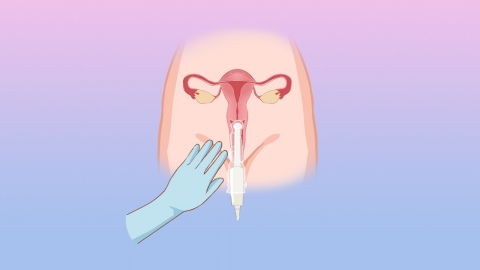How does pelvic congestion subside?
Pelvic congestion may be caused by sexual stimulation, prolonged standing or sitting, pelvic inflammatory disease, endometriosis, or pelvic venous stasis syndrome. It can be improved through rest, posture adjustment, and medication. If congestion persists or is accompanied by abdominal pain or abnormal bleeding, prompt medical attention is necessary.
1. Sexual stimulation: During sexual activity, pelvic tissues become excessively congested. If blood flow does not return to normal promptly afterward, a sensation of heaviness or discomfort may occur. It is recommended to rest in bed for 15–20 minutes after intercourse and avoid immediate strenuous activity. Gentle massage of the lower abdomen can help promote blood circulation.
2. Prolonged standing or sitting: Maintaining the same posture for long periods can impair venous return in the pelvis, leading to blood accumulation and congestion, often accompanied by lower back soreness and fatigue. It is advised to stand up and move every hour for at least 5 minutes, adjust sitting and standing postures, and avoid wearing overly tight clothing that compresses the pelvic area.

3. Pelvic inflammatory disease: Bacterial infection causes inflammation in the pelvis, which leads to venous congestion and swelling, often accompanied by lower abdominal pain, fever, and increased vaginal discharge. Under medical guidance, medications such as cefuroxime axetil tablets, metronidazole tablets, and Fuyankang capsules may be used to relieve symptoms.
4. Endometriosis: Ectopic growth of endometrial tissue stimulates pelvic structures, causing congestion, along with dysmenorrhea (painful menstruation) and pain during intercourse. Patients may follow medical advice to use medications such as dydrogesterone tablets, ethinylestradiol cyproterone acetate tablets, or ibuprofen sustained-release capsules to manage symptoms.
5. Pelvic venous stasis syndrome: Incompetent valves in pelvic veins impair blood return, resulting in congestion and symptoms such as lower abdominal fullness and dull pain in the lower back and sacrum. Under medical supervision, medications like diosmin tablets, micoselle tablets, or ibuprofen sustained-release suspension may be used to alleviate symptoms.
In daily life, it is recommended to maintain a regular sleep schedule and avoid staying up late, eat more fruits and vegetables to ensure adequate vitamin intake, engage in moderate, gentle exercises such as walking, maintain good personal hygiene, and minimize pelvic irritation to support recovery.






